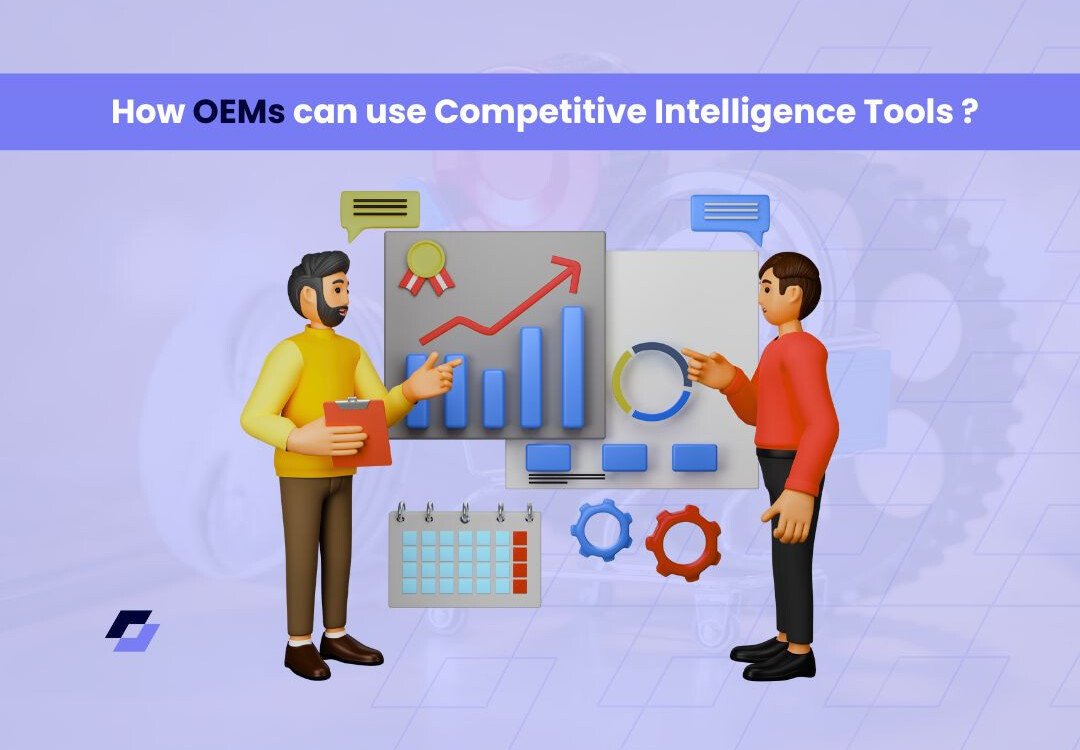The global manufacturing sector is witnessing unprecedented disruption — from volatile supply chains and shifting customer demands to technological breakthroughs that reshape industry standards overnight. For Original Equipment Manufacturers (OEMs), the ability to stay ahead of these challenges defines long-term survival. In this environment, Competitive Intelligence is not just a strategic advantage — it is an operational necessity. Through the implementation of Competitive Intelligence for OEM, businesses can transform uncertainty into opportunity by anticipating trends, mitigating risks, and optimizing decision-making.
Understanding Market Disruption in the OEM Sector
Market disruption in the OEM landscape comes from multiple fronts: digitization, new entrants, changing material costs, and evolving buyer behavior. Traditional market research often fails to capture these fast-paced shifts. Competitive Intelligence bridges this gap by continuously collecting and analyzing real-time data from multiple sources — including competitors, distributors, and customers.
Unlike static research reports, CI provides a live view of market movement. This intelligence allows OEMs to predict disruptions before they materialize and adapt operations accordingly. In short, while disruption is inevitable, being blindsided by it is not.
The Role of Competitive Intelligence for OEM in Managing Change
For OEMs, adopting Competitive Intelligence tools means building a proactive business model — one that thrives on foresight rather than reaction. Here’s how CI supports OEMs during times of market volatility:
-
Predictive Market Insights: Analyze real-time competitor pricing and positioning to forecast future industry shifts.
-
Strategic Supply Chain Management: Monitor supplier and distributor pricing behaviors to maintain cost stability and avoid margin erosion.
-
Opportunity Identification: Detect gaps in the market created by competitor missteps or emerging customer demands.
-
Rapid Decision-Making: Access live dashboards that transform complex data into actionable strategies.
This intelligence-backed agility allows OEMs to pivot faster, minimize losses, and capture new opportunities in uncertain environments.
Turning Disruption into Competitive Advantage
Disruptions often create imbalances — but they also open doors for innovation. With Competitive Intelligence for OEM, manufacturers can identify where competitors struggle and position themselves to fill that void.
For instance, during supply shortages, CI platforms can reveal alternative sourcing options or identify pricing anomalies that help OEMs negotiate better supplier terms. Similarly, by tracking global competitors’ product changes or feature updates, OEMs can differentiate their offerings with enhanced quality, functionality, or pricing flexibility.
In essence, Competitive Intelligence transforms disruption from a threat into a catalyst for strategic growth.
Leveraging Technology to Enhance Market Resilience
Modern Competitive Intelligence platforms such as PriceIntelGuru use AI and automation to process millions of data points daily. These systems provide OEMs with actionable insights across pricing, production, and distribution channels.
By integrating CI into enterprise systems, OEMs gain end-to-end visibility — from raw material sourcing to customer delivery. This real-time intelligence helps decision-makers align production schedules, inventory levels, and pricing models with evolving market dynamics.
Additionally, predictive analytics within Competitive Intelligence for OEM tools enable scenario modeling. Manufacturers can simulate various market conditions — such as competitor price drops or currency fluctuations — and prepare contingency strategies before those events occur.
The Long-Term Impact of Competitive Intelligence on OEM Sustainability
Disruption is not a one-time event; it’s a continuous process. As global markets evolve, OEMs that build intelligence-driven operations will not only survive disruptions but lead industries through them.
By embedding Competitive Intelligence into the organizational fabric, OEMs gain a 360-degree understanding of their environment — ensuring every pricing adjustment, innovation initiative, and partnership decision is rooted in verified insight.
Furthermore, this approach drives internal alignment across departments. Sales, marketing, and product teams can collaborate around a unified view of the market, fostering consistency and agility even during high-pressure periods.
Conclusion
In times of rapid change, resilience depends on readiness. Competitive Intelligence for OEM provides that readiness by transforming data into foresight and foresight into strategy. Whether it’s navigating supply chain disruptions or adapting to digital transformation, OEMs equipped with strong Competitive Intelligence frameworks are positioned not just to endure market turbulence — but to emerge stronger, smarter, and more profitable.
